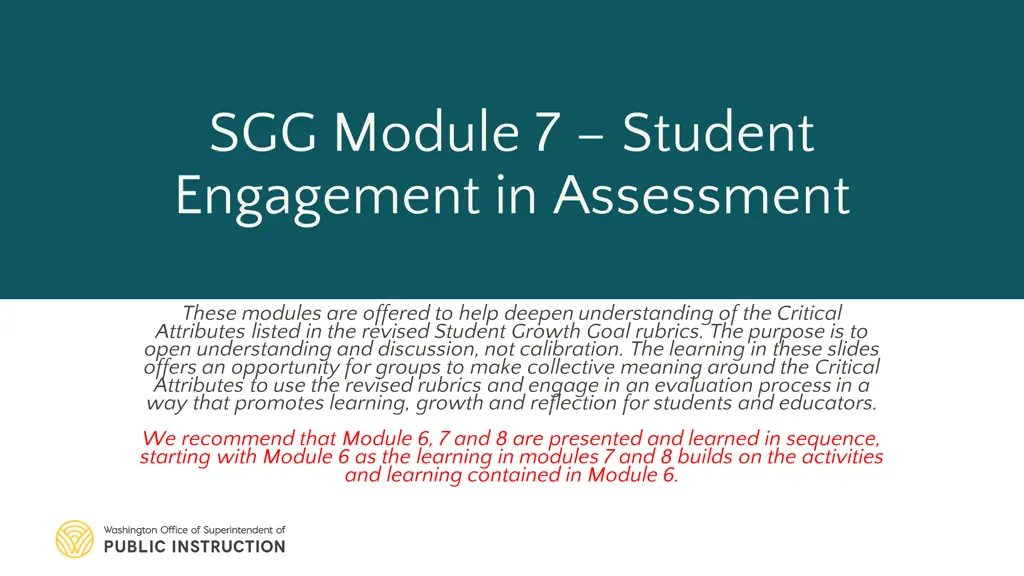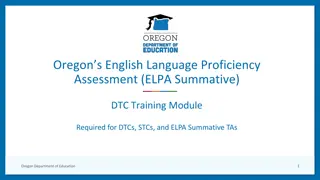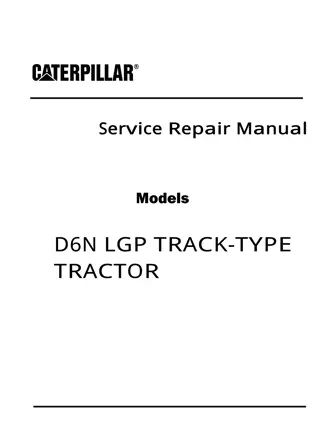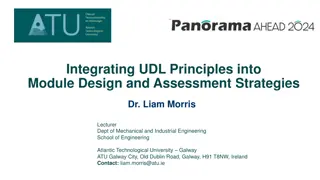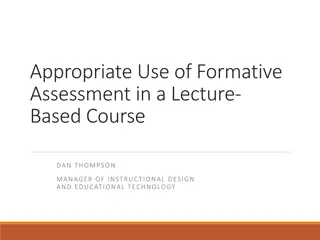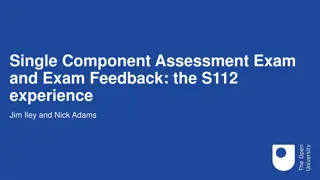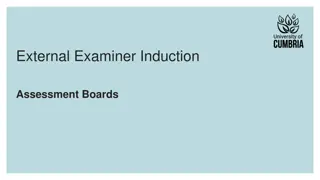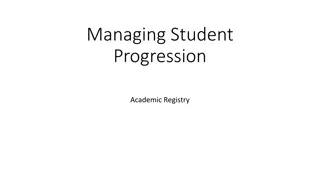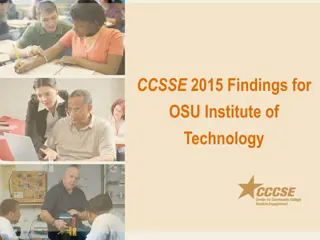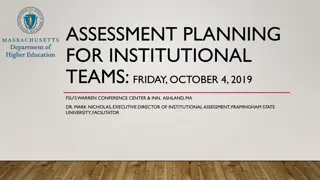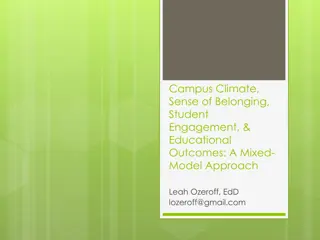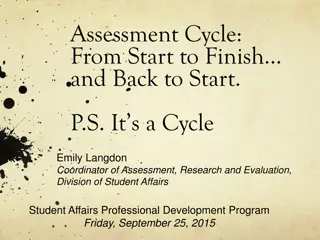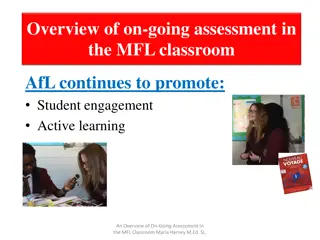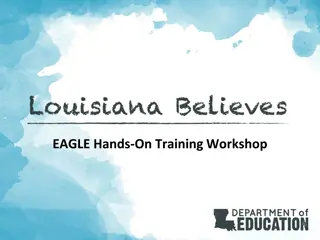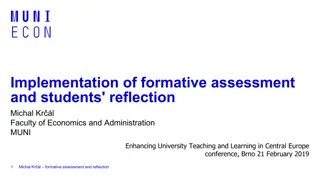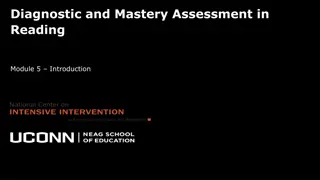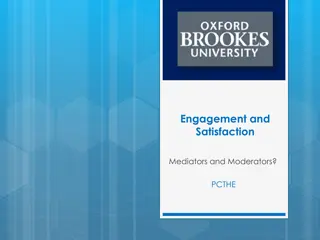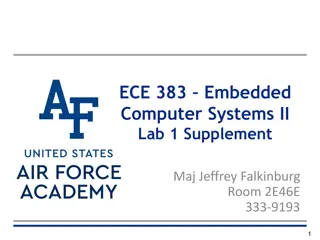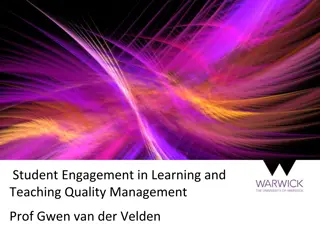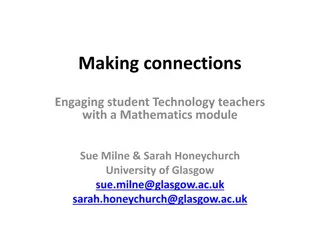SGG Module 7 – Student Engagement in Assessment
Strategies and benefits of student engagement in assessment. Learn to connect formative assessment to student growth conversations and instructional frameworks while promoting student voice and self-reflection. Build understanding and skills for effective assessment practices.
Download Presentation

Please find below an Image/Link to download the presentation.
The content on the website is provided AS IS for your information and personal use only. It may not be sold, licensed, or shared on other websites without obtaining consent from the author.If you encounter any issues during the download, it is possible that the publisher has removed the file from their server.
You are allowed to download the files provided on this website for personal or commercial use, subject to the condition that they are used lawfully. All files are the property of their respective owners.
The content on the website is provided AS IS for your information and personal use only. It may not be sold, licensed, or shared on other websites without obtaining consent from the author.
E N D
Presentation Transcript
SGG Module 7 Student Engagement in Assessment These modules are offered to help deepen understanding of the Critical Attributes listed in the revised Student Growth Goal rubrics. The purpose is to open understanding and discussion, not calibration. The learning in these slides offers an opportunity for groups to make collective meaning around the Critical Attributes to use the revised rubrics and engage in an evaluation process in a way that promotes learning, growth and reflection for students and educators. We recommend that Module 6, 7 and 8 are presented and learned in sequence, starting with Module 6 as the learning in modules 7 and 8 builds on the activities and learning contained in Module 6. 1
SSG Concept Map Overview: Module 1 What does this mean for evaluators: Module 2A What does this mean for teachers: Module 2B Formative & Summative Assessment: Module 6 Student Engagement in Assessment: Module 7 Critical Standard: Module 3 Cognitive Engagement: Module 4 Emotional Engagement: Module 5 Feedback from Students: Module 8
Facilitator Outline Activity Slides & Times Introduction Slides 1-8 15 mins Unpacking Student Engagement in Assessment Slides 9-15 90 mins Embedding Student Engagement in Assessment Slides 16-19 110 mins Connecting to the Instructional Framework Slide 20 15 mins Key Considerations Slide 21 15 mins Additional resources Slide 22 5 mins Closure Slides 23-24 5 mins 3
Learning Targets Understand the connection between formative assessment and student engagement in assessment and why it is important. Describe how student engagement in assessment promotes student voice and places students in the driver seat in monitoring, communicating, and promoting their own growth, Be able to identify strategies that promote student engagement in assessment and incorporate them into your practice. Identify where student engagement in assessment connects to your instructional framework. Understand the key considerations for teachers/administrators to engage in student growth conversations focused on student engagement in assessment. 4
Activator: When you think of Formative Assessment and Student Engagement in Assessment - what comes to mind and how are they related? 5
Connections to Module 6: Formative Assessment Impacts Achievement, Instruction, and Motivation 1. Black and Wiliam (1998) found that gains in achievement associated with formative assessment nearly doubled their rate of learning. 2. In Advancing Formative Assessment in Every Classroom, Moss and Brookhart (2009) survey a range of research that supports the powerful effect of formative assessment on teacher efficacy. In a very real way it flips a switch, shining a bright light on individual teaching decisions so that teachers can see clearly the difference between the intent and the effect of their actions (p. 10). 3. A similar transformation occurs in the motivation of students when they are taught that intelligence is malleable and growth comes through effort (Dweck, 2006; Vispoel & Austin, 1995). 4. Formative assessment can be used to build confidence and empower student ownership over learning and growth (Yin, Shavelson, Ayala, Ruiz-Primo, Brandon, & Furtak, 2008). 6
Assessment Enhances Learning There is considerable evidence that assessment is a powerful process for enhancing learning. Key Factors in the research: 1. the provision of effective feedback to pupils 2. the active involvement of pupils in their own learning 3. adjusting teaching to take account of the results of assessment 4. recognition of the profound influence assessment has on the motivation and self- esteem of pupils, both of which are crucial influences on learning 5. the need for pupils to be able to assess themselves and understand how to improve. Black, P. & William, D. (1998). Inside the Black Box: Raising standards through classroom assessment. London: King's College. 7
Definitions: Student Engagement in Assessment Students understand the learning goal and may have been involved in determining the criteria to be used for evaluating it. Students have an opportunity to assess their own work and/or that of peers using these criteria. Students monitor their progress on the learning goal 8
Unpacking: The Power of Student Voice in Everything! Dr. Qualglia says that it isn't enough to listen....the adults must believe the students have something to offer. Quaglia Institute Student voice in its most profound and radical form, calls for a cultural shift that opens up spaces and minds not only to the sound but also to the presence and power of students power and authority . Aspects of student voice do raise concerns for some adults, who feel there needs to be more of a distance between themselves and their students. Cook-Sather (2006:366) explores the influence of powershift between adults and students: the shifts in power dynamics between adults and young people and in roles for students are both prerequisites and results of the key premises and practices of student voice work . This power shift can be perceived as threatening to both institution and individual teachers. Robertson, G. (2015). Student voice at the "heart of learning". Research in Teacher Education, 5(1), 27 32. 9
Why Does Student Engagement in Assessment Matter? Read: Why Student- Engaged Assessment Matters Reflect: Use Connect, Extend, Challenge to process and take notes on the article. Small Group Discussion 11
Hatties Greatest Effect size: Self Reported Grades / Student Expectations How we can apply it in the classroom. Students can accurately predict how they will perform on a given performance task or assessment and have a clear understanding of what they know. Hattie (2010) describes this phenomenon as self-reported grades or student expectations and it is one of the most powerful influences in increasing student learning outcomes. (effect size = 1.44) Key steps: 1. Set goals for themselves 2. Predict their performance 3. Self-assessment and sharing rubrics 13
Application: What are some questions we can ask and challenge our students? Are you satisfied with your learning? Are you satisfied that you demonstrated your knowledge and skill? How does your work compare to the expectations on the rubric? Which parts of the assignment (project, performance, etc.) were you most satisfied?, How closely does your work on this assignment (project, performance, etc.) reflect your learning? Were the strategies that you used effective in helping you reach your goals? , On a scale of 1 to 10, how would you rate your effort? If you were to do this over, how could it be improved? 14
Application: What are some questions teachers can ask for their own reflection? What was the objective/standard I was hoping to teach? What assignment/prompt/project/activity did I choose to teach the standard/objective? How successful was the lesson? How do I know?, What evidence do I have? , What percentage of students reached the goal or standard? Which parts of the lesson am I most satisfied? How will I reteach and/or retest any unsuccessful students? 15
Embedding: Co-Constructing Success Criteria Read & Reflect: Build it Together: Co-Constructing Success Criteria with Students | Cult of Pedagogy 16
Co-Constructing Success Criteria Videos Choose one of the two videos to watch: Co-constructing Success Criteria with High School Students - YouTube Co-Constructing Success Criteria in an Elementary School Classroom - YouTube Discuss with a partner: How could you co-construct success criteria with your students? 17
Peer Assessment Watch the video and read the text: Video: Peer Assessment: Reflections from Students and Teachers (4:53) Text: Peer and self-assessment for students What was affirmed for you in your teaching? What is your take-away for application? 18
Connecting Kristins story from Module 6 1. Read Kristin s story: Understanding Kristin s Resistance 2. section of the blank chart by identifying evidence from Kristin s story. Fill out the SGG: Student Engagement in Assessment 3 Attributes of Student Growth chart for only the Student Engagement in Assessment section. Review other parts of the chart to gain further insights. Check your thinking by reviewing the Unpacking Critical 19
Connections to your Instructional Framework Using your Instructional Framework handout, highlight where you see connections to: Student Engagement in Assessment reflection and self-assessment use of feedback goal-setting revision success criteria monitoring communicating promoting their own growth, 20
Key Considerations: Student Engagement in Assessment If you are a teacher: When you are in a student growth conversation with your administrator, what will you communicate on how you have embedded student engagement in assessment into your instructional assessment practices? If you are an administrator: When you are in a student growth conversation how will you encourage dialogue with a teacher about how they are embedding student engagement in assessment into their instructional/assessment practice? 21
Additional Readings and Resources Student-Engaged Assessment Putting Students in Charge of Their Learning | Edutopia Three Ways to Better Engage Students to Get the Most from Educational Assessments Involving Students in the Assessment Process What does Self-Assessment and Self-Reflection bring to the Learning Journey Why is Self-Reflection a Good Thing for Students to Do? | Colorado Academy News A Culturally Responsive Classroom Assessment Framework Simple Ways to Solicit Peer Feedback in High School English Classes | Edutopia Putting Students in Charge of Their Learning Journey (Video 5:19) 7 Things That Happen When Students Own Their Learning - John Spencer (Video 1:41 & Text) Self-Reflection and Assessment How to Get K 12 Students Thinking About Their Own Learning | Edutopia Video: Dr. Heidi Andrade, Ed.D. Reflects on Self- and Peer Assessment (5:24) 22
Closing To become self-directed learners, students must learn to assess the demands of the task, evaluate their own knowledge and skills, plan their approach, monitor their progress, and adjust their strategies as needed. How Learning Works:Seven Research-Based Principles for Smart Teaching 1st Edition: by Susan A. Ambrose (Author), Michael W. Bridges (Author), Michele DiPietro (Author), Marsha C. Lovett (Author), Marie K. Norman (Author), Richard E. Mayer (Foreword) When students own the assessment process, they grow in self-awareness and intellectual humility. They learn how to engage in goal-setting, how to monitor their progress, and, if this is embedded within PBL, they learn project management. As students assess their strengths and weaknesses and try new approaches, they grow more resilient. They engage in iterative thinking and often come up with novel approaches for problem-solving. When students engage in peer assessment, they learn how to be a good coach. They learn how to give and receive feedback. They learn how to collaborate and problem solve. In other words, when we empower students to own the assessment process, we empower students to become lifelong learners. Five Reasons Students Should Own the Assessment Process, John Spencer 23
Thank you! We d like to honor and acknowledge the thought, time and effort that went into creating this module, and offer thanks to the module developers: Patricia Beuke, OESD 114 and Danielson Framework Specialist Joy Lansdowne, formerly ESD 101 and Marzano Framework Specialist In appreciation for their work and in acknowledgement to others who have contributed: Kathryn A. Page, Ed.D. Office of System and School Improvement Partner/Contractor Gonzaga University Supervisor for Principal Certification AWSP Mentor Maja Wilson, PhD OSPI ELA Assessment Specialist, Assessment Development Serena O Neil, NBCT OSPII Math Assessment Specialist, Assessment Development 24
